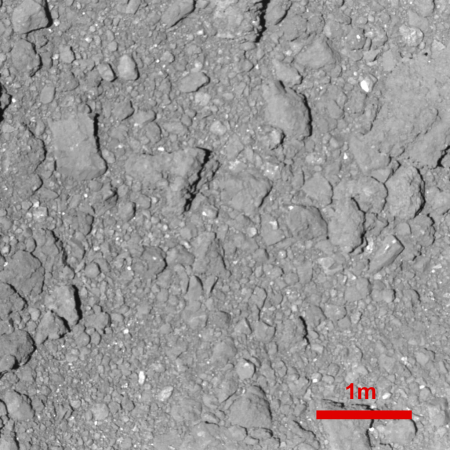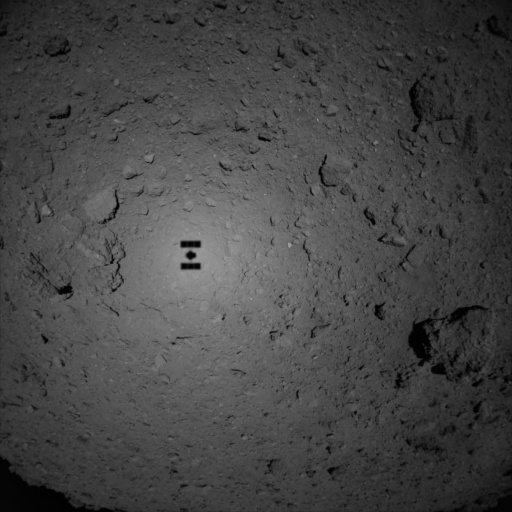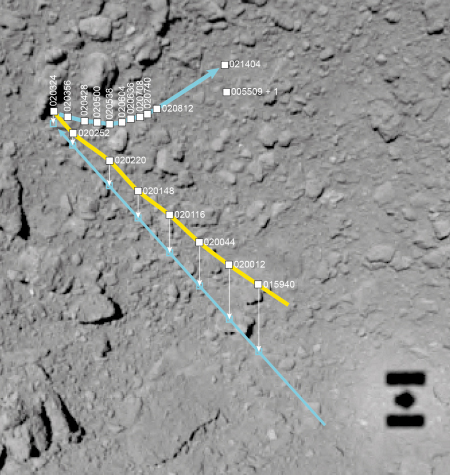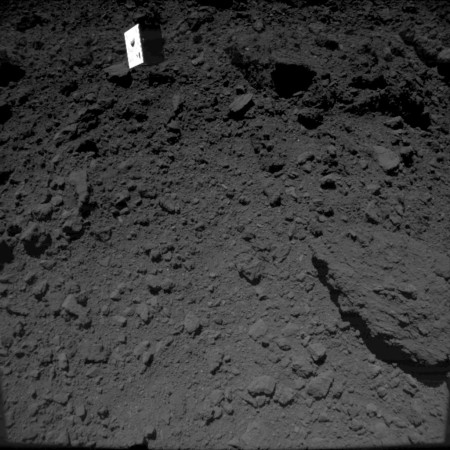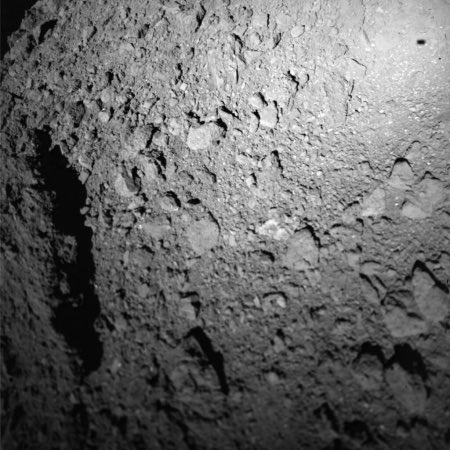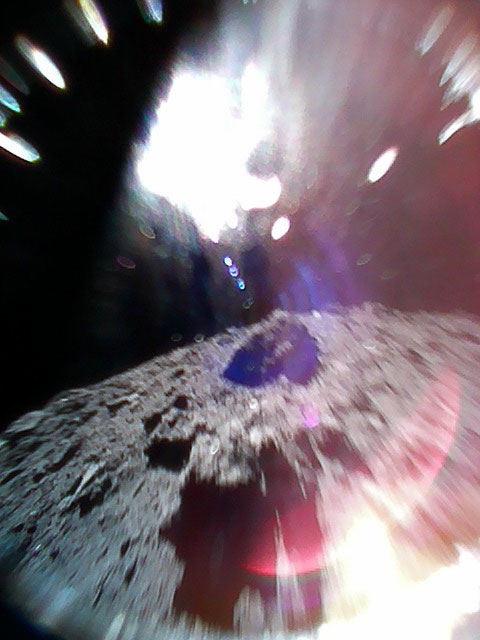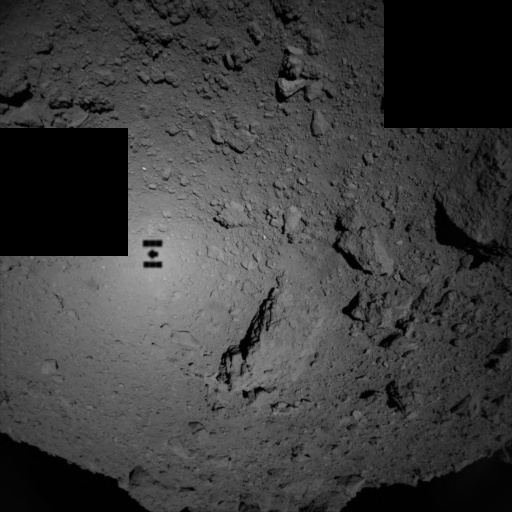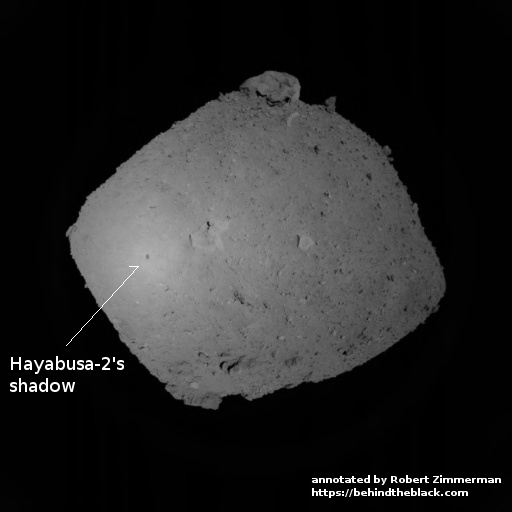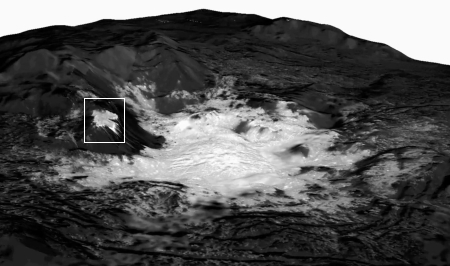Oblique view of Hayabusa-2’s most recent landing rehearsal
Cool movie time! The Hayabusa-2 science team has released a small movie of images taken by a side-mounted camera of the spacecraft’s most recent landing rehearsal, showing the spacecraft ascend from its closest approach from an oblique angle.
I have embedded the movie from these images below the fold. As they note,
Images taken with the small monitor camera (CAM-H) during the Touchdown 1 Rehearsal 3 operation (TD1-R3). One image was captured every second from immediately after the spacecraft began to ascend (altitude 21m) on October 25, 2018 at 11:47 JST. The spacecraft was rising at about 52cm/s.
It appears the closest image was taken from about 21 meters away, about 65 feet, and gives a sense of scale. It also reveals once again how difficult that landing in January is going to be. Though this location is thought to be the smoothest spot on Ryugu, it is still littered with rocks that could cause problems.
» Read more
Cool movie time! The Hayabusa-2 science team has released a small movie of images taken by a side-mounted camera of the spacecraft’s most recent landing rehearsal, showing the spacecraft ascend from its closest approach from an oblique angle.
I have embedded the movie from these images below the fold. As they note,
Images taken with the small monitor camera (CAM-H) during the Touchdown 1 Rehearsal 3 operation (TD1-R3). One image was captured every second from immediately after the spacecraft began to ascend (altitude 21m) on October 25, 2018 at 11:47 JST. The spacecraft was rising at about 52cm/s.
It appears the closest image was taken from about 21 meters away, about 65 feet, and gives a sense of scale. It also reveals once again how difficult that landing in January is going to be. Though this location is thought to be the smoothest spot on Ryugu, it is still littered with rocks that could cause problems.
» Read more

